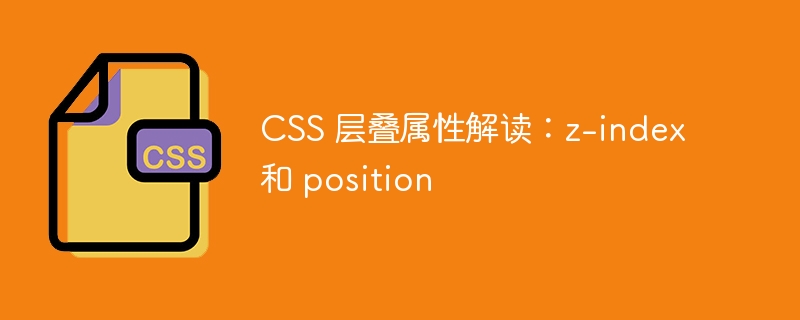

Interpretation of CSS cascading properties: z-index and position
In CSS, the design of layout and style is very important. In design, it is often necessary to layer and position elements. Two important CSS properties, z-index and position, can help us achieve these needs. This article will dive into these two properties and provide specific code examples.
1. z-index attribute
The z-index attribute is used to define the stacking order of elements in the vertical direction. The stacking order of elements is determined by the value of the z-index attribute, with elements with higher values covering elements with lower values. The value of this attribute can be positive, negative, or auto.
Here is an example that shows how to use the z-index attribute:
In the above code, two red squares are created and their positions overlap. The z-index attribute value of box1 is 1, and the z-index attribute value of box2 is 2. So box2 will cover box1 and appear on top.
It is worth noting that only elements whose positioning attribute (position) is not static (i.e. relative, absolute, fixed, sticky) can be affected by the z-index attribute. This is because only elements whose positioning attributes are not static can generate a cascading context.
2. Position attribute
The position attribute is used to specify the positioning type of the element. It has four possible values: static, relative, absolute and fixed.
The following is an example showing how to use the position attribute:
In the above code, a red square is created and its positioning type is set to relative . Move the box 50 pixels down and 50 pixels to the right relative to its normal position using the top and left properties.
To sum up, z-index and position are important properties for realizing CSS cascading and positioning. By using these two attributes appropriately and combining them with specific positioning and stacking order requirements, we can have precise control over page elements. Hopefully the code examples provided in this article will help readers better understand and apply these two properties.
The above is the detailed content of Interpretation of CSS cascading properties: z-index and position. For more information, please follow other related articles on the PHP Chinese website!




